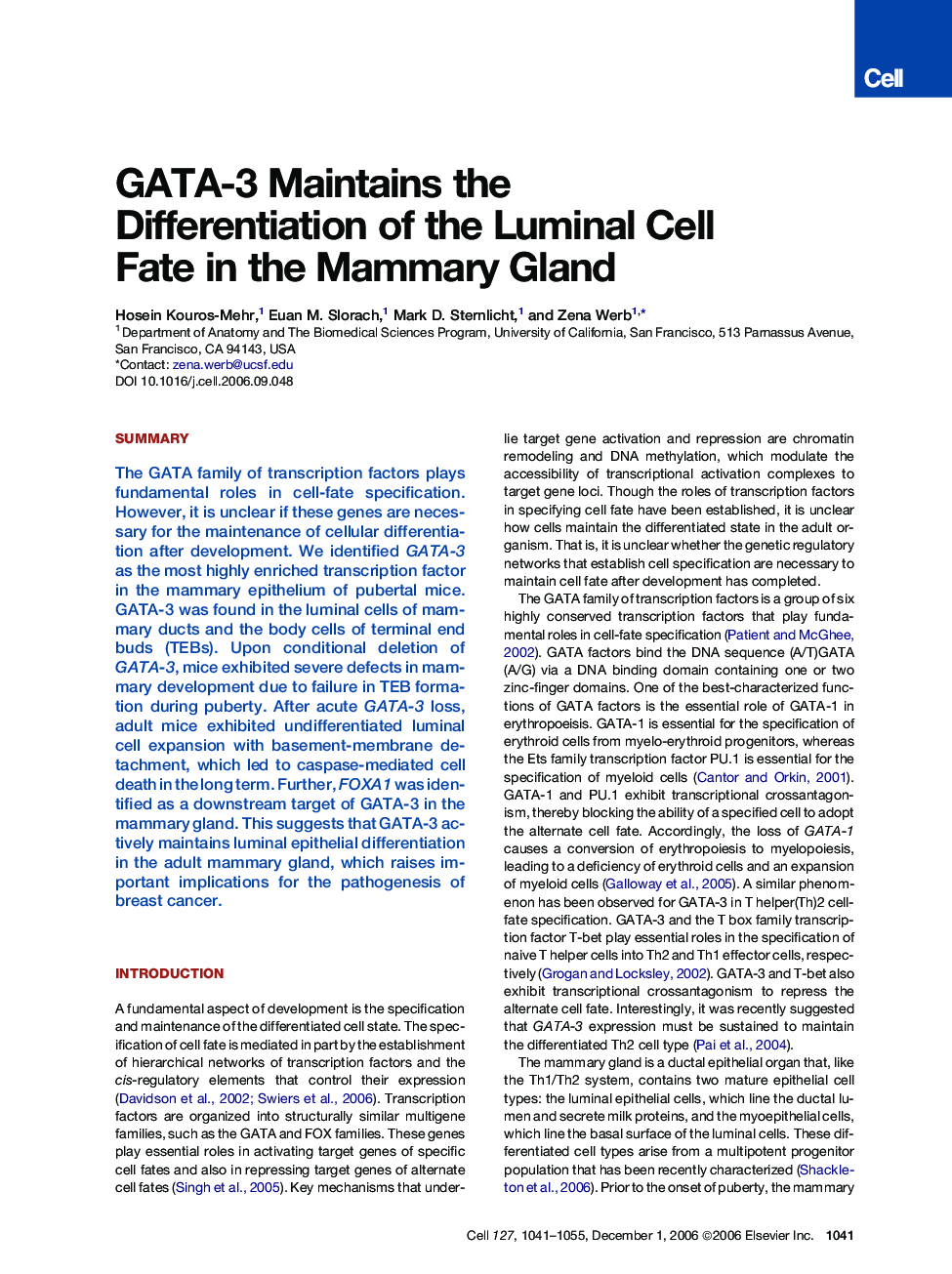| کد مقاله | کد نشریه | سال انتشار | مقاله انگلیسی | نسخه تمام متن |
|---|---|---|---|---|
| 2038464 | 1072373 | 2006 | 15 صفحه PDF | دانلود رایگان |

SummaryThe GATA family of transcription factors plays fundamental roles in cell-fate specification. However, it is unclear if these genes are necessary for the maintenance of cellular differentiation after development. We identified GATA-3 as the most highly enriched transcription factor in the mammary epithelium of pubertal mice. GATA-3 was found in the luminal cells of mammary ducts and the body cells of terminal end buds (TEBs). Upon conditional deletion of GATA-3, mice exhibited severe defects in mammary development due to failure in TEB formation during puberty. After acute GATA-3 loss, adult mice exhibited undifferentiated luminal cell expansion with basement-membrane detachment, which led to caspase-mediated cell death in the long term. Further, FOXA1 was identified as a downstream target of GATA-3 in the mammary gland. This suggests that GATA-3 actively maintains luminal epithelial differentiation in the adult mammary gland, which raises important implications for the pathogenesis of breast cancer.
Journal: - Volume 127, Issue 5, 1 December 2006, Pages 1041–1055